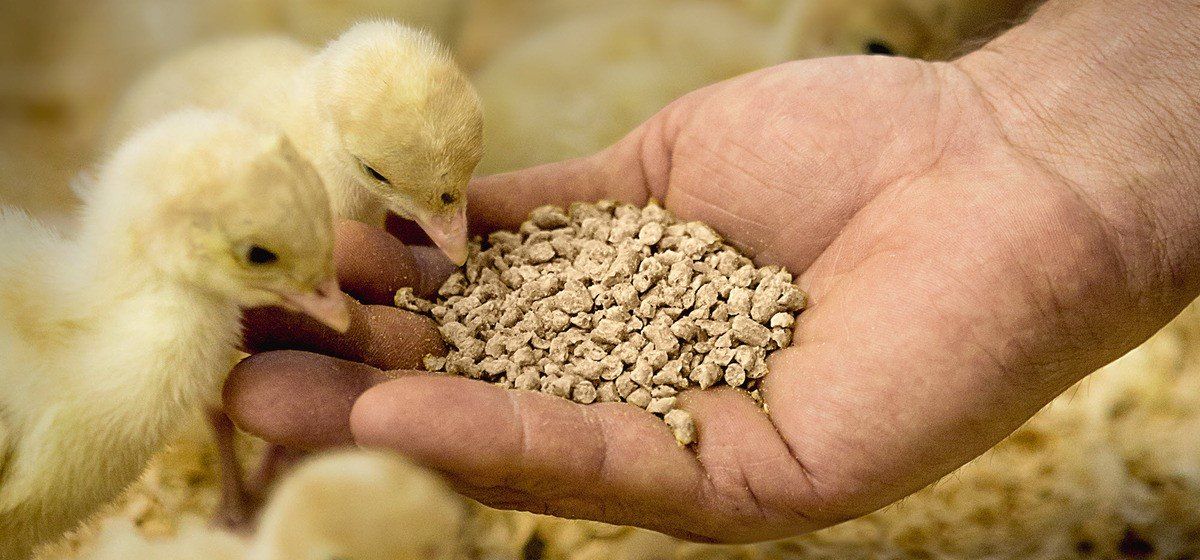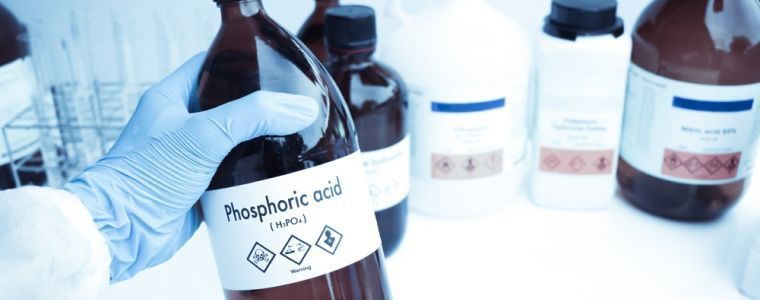Why Feed-Grade Phosphoric Acid is Essential for Animal Nutrition
In an era of increasing demand for high-quality livestock products, optimizing animal nutrition has become a top priority for farmers and feed producers. The health and productivity of animals are deeply influenced by the nutrients they consume, and every element in their diet must serve a purpose. Among these, feed-grade phosphoric acid plays a pivotal yet often overlooked role in ensuring balanced nutrition and supporting optimal growth and reproduction.
Feed-grade phosphoric acid is a refined form of phosphoric acid tailored specifically for animal nutrition. As a vital source of phosphorus—a key mineral for bone development, energy metabolism, and cellular function—it ensures that livestock receive the nutrients they need to thrive. Additionally, it helps regulate feed acidity, enhancing palatability and digestibility, which can lead to improved feed conversion rates.
Decachem, a leading producer of purified phosphoric acid, is committed to delivering high-quality feed-grade solutions that support sustainable livestock farming.
Balancing essential nutrients in animal feed is not just about meeting basic dietary requirements; it’s about fostering peak performance, disease resistance, and efficient reproduction. A well-formulated feed with the right phosphorus levels is the cornerstone of sustainable livestock farming, contributing to healthier animals and more productive farming operations. In this blog post, we’ll explore the critical role of feed-grade phosphoric acid in animal nutrition and its benefits for
modern agriculture.
What is Feed-Grade Phosphoric Acid?
Feed-grade phosphoric acid is a high-purity chemical product specifically formulated to meet the nutritional needs of livestock and poultry. Its primary role is to serve as a concentrated source of phosphorus, an essential mineral that supports critical functions such as bone development, energy metabolism, and overall cellular health in animals. The chemical composition of feed-grade phosphoric acid is H₃PO₄, a clear and highly soluble compound that ensures efficient phosphorus delivery when incorporated into animal feed.
What sets feed-grade phosphoric acid apart from other grades, such as industrial or food-grade phosphoric acid, is its tailored refinement process. While industrial-grade phosphoric acid may contain impurities that make it unsuitable for consumption, feed-grade is purified to remove contaminants like heavy metals. This ensures it meets strict safety and quality standards for animal nutrition. Compared to food-grade phosphoric acid, feed-grade focuses solely on nutrient contribution rather than broader applications like pH regulation in human food products.
Feed-grade phosphoric acid offers a reliable and bioavailable phosphorus source for animals, making it an indispensable feed additive for balanced diets. Its chemical properties, including high solubility and consistent purity, allow it to integrate seamlessly into feed formulations, enhancing nutrient absorption and improving feed efficiency.
As a vital phosphorus source for animals, feed-grade phosphoric acid plays a crucial role in the production of high-quality livestock products, contributing to the sustainability of modern farming practices.

The Role of Phosphorus in Animal Nutrition
Phosphorus is one of the most critical nutrients in animal nutrition and is essential for maintaining health, productivity, and overall well-being. As the second most abundant mineral in the animal body, phosphorus plays key roles in various physiological processes that directly impact growth and performance.
Bone Development and Strength
Approximately 85% of the phosphorus in an animal’s body is found in bones and teeth. It works in tandem with calcium to form and maintain strong skeletal structures, ensuring proper support and mobility.
Metabolic Processes
Phosphorus is indispensable for energy transfer in cells, as it is a key component of adenosine triphosphate (ATP). This molecule is responsible for storing and releasing energy needed for vital functions like muscle contraction, digestion, and thermoregulation.
Enzyme Function and Cellular Repair
Many enzymes and cellular processes rely on phosphorus to function effectively. It is a critical part of nucleic acids (DNA and RNA), which drive cellular repair, replication, and protein synthesis.
Growth and Reproductive Performance
Adequate phosphorus levels support optimal growth rates and improve reproductive health by enhancing fertility and supporting fetal development in pregnant animals.
Effects of Phosphorus Deficiency
A lack of phosphorus in animal diets can lead to significant health and productivity issues. Symptoms of deficiency include poor growth, reduced feed efficiency, skeletal deformities, and diminished fertility. Severe deficiencies may even result in weakened immune responses, increasing susceptibility to diseases.
Given its pivotal role in nutrient metabolism and overall animal health, ensuring adequate phosphorus intake through feed additives like feed-grade phosphoric acid is vital. By addressing the nutritional needs of livestock, farmers can achieve sustainable growth and improved production efficiency while preventing the negative impacts of phosphorus deficiency.
Why Feed-Grade Phosphoric Acid is the Ideal Phosphorus Source
Feed-grade phosphoric acid is widely regarded as one of the most efficient and reliable sources of phosphorus for livestock nutrition. Its unique properties make it a preferred choice over traditional phosphorus supplements like dicalcium phosphate.
High Bioavailability
The phosphorus in feed-grade phosphoric acid is highly bioavailable, meaning
animals can readily absorb and utilize it. This efficiency ensures optimal phosphorus uptake for critical biological functions such as bone development, energy metabolism, and reproduction. Compared to other sources, feed-grade phosphoric acid provides a consistent and easily digestible phosphorus supply, maximizing feed efficiency and minimizing waste.
Purity and Digestibility
Feed-grade phosphoric acid undergoes stringent purification processes, resulting in a product free from harmful contaminants like heavy metals. This high level of purity not only ensures safety but also enhances its digestibility across various livestock species. Whether used in poultry, swine, or cattle feeds, it integrates seamlessly into formulations, supporting balanced nutrition and improved animal performance.
Reduced Anti-Nutritional Factors
Unlike some phosphorus sources that may contain anti-nutritional factors interfering with nutrient absorption, feed-grade phosphoric acid is free from such compounds. This allows for better nutrient interaction and supports the overall effectiveness of feed formulations.
Cost-Effectiveness
For large-scale feed production, feed-grade phosphoric acid offers a cost-effective solution. Its concentrated form reduces the volume required, saving on transportation and storage costs, while its high efficiency minimizes feed wastage.
By combining high bioavailability, purity, and cost advantages, feed-grade phosphoric acid stands out as the ideal phosphorus source for livestock nutrition. Its use not only supports animal health and productivity but also contributes to sustainable and efficient farming practices.
Applications of Feed-Grade Phosphoric Acid in Animal Feed
Feed-grade phosphoric acid is a versatile and essential ingredient in a wide range of livestock and aquaculture feed formulations. Its role as a concentrated, bioavailable source of phosphorus makes it indispensable for promoting animal health, growth, and productivity across species.
Poultry Feed
In poultry nutrition, feed-grade phosphoric acid plays a vital role in supporting bone development and egg production. Adequate phosphorus intake enhances eggshell strength, ensuring better quality eggs, while also improving the skeletal health and growth of broilers.
Swine Feed
Phosphorus is crucial for pigs, particularly during growth and reproductive phases. Feed-grade phosphoric acid is included in swine diets to improve feed efficiency, support rapid growth rates, and enhance reproductive performance in breeding sows.
Aquaculture Feed
In aquaculture, the precise balance of nutrients is critical for optimal growth and health. Feed-grade phosphoric acid is used in fish and shrimp feed formulations to support strong skeletal development, efficient energy metabolism, and overall resilience in aquatic species.
Cattle Feed
For dairy and beef cattle, feed-grade phosphoric acid contributes to stronger bones and higher milk production. Phosphorus is also essential for rumen microbial activity, aiding digestion and nutrient absorption, which translates into better overall productivity.
Industries Benefiting from Feed-Grade Phosphoric Acid
The animal feed formulation industry heavily relies on feed-grade phosphoric acid to meet the nutritional requirements of diverse livestock. Poultry farms, pig farms, aquaculture operations, and dairy producers all incorporate it into their feed solutions to ensure optimal performance.
With its broad applications and significant benefits, feed-grade phosphoric acid continues to play a crucial role in modern
animal nutrition, enabling farmers and industries to meet the growing demand for high-quality livestock and aquaculture products.

Benefits of Feed-Grade Phosphoric Acid for Animal Nutrition
Feed-grade phosphoric acid offers a range of nutritional, economic, and environmental advantages, making it an indispensable component of modern animal feed formulations. Its role in optimizing livestock health and productivity contributes to both better farming outcomes and sustainable agricultural practices.
Nutritional and Economic Advantages
- Enhanced Feed Efficiency and Nutrient Absorption
The highly bioavailable phosphorus in feed-grade phosphoric acid ensures animals can effectively absorb and utilize this essential mineral. This leads to improved feed efficiency, allowing farmers to achieve better growth rates and productivity with less feed. - Improved Livestock Health and Productivity
Adequate phosphorus levels are vital for numerous physiological functions, including bone development, energy metabolism, and reproductive health. Feed-grade phosphoric acid helps maintain optimal animal health, reducing the risk of disease and improving overall performance. - Prevention of Deficiencies
Phosphorus-related deficiencies can lead to poor growth, skeletal deformities, and reduced fertility. Incorporating feed-grade phosphoric acid into diets prevents these issues, ensuring livestock meet their genetic potential for growth and production.
Environmental Benefits
- Reduced Phosphorus Excretion in Manure
Feed-grade phosphoric acid allows for precise phosphorus supplementation, minimizing excess intake. This reduces phosphorus excretion in manure, addressing a key environmental challenge associated with livestock farming. - Decreased Pollution Risks
Excess phosphorus runoff from agricultural operations can cause eutrophication in water bodies, leading to algae blooms and ecosystem damage. By reducing waste phosphorus, feed-grade phosphoric acid supports more environmentally friendly farming practices and helps mitigate pollution risks.
As an efficient, cost-effective, and environmentally conscious phosphorus source, feed-grade phosphoric acid enables sustainable livestock nutrition. It ensures animals receive the nutrients they need while supporting resource-efficient farming and protecting the environment. These benefits make it an essential tool for farmers striving to balance productivity with responsible stewardship of natural resources.
Safety and Regulatory Aspects of Feed-Grade Phosphoric Acid
The use of feed-grade phosphoric acid in animal nutrition is governed by stringent global safety standards and regulatory guidelines to ensure its quality and safety. These regulations are essential for protecting animal health, maintaining food safety, and supporting sustainable farming practices.
Global Safety Standards
Feed-grade phosphoric acid must meet specific purity criteria to be approved for use in animal feed. Regulatory bodies such as the European Food Safety Authority (EFSA) and the U.S. Food and Drug Administration (FDA) mandate strict quality control measures to ensure the product is free from contaminants like heavy metals, harmful microbes, and other impurities. Compliance with these standards safeguards both animal and human health.
Purity and Compliance
The production process of feed-grade phosphoric acid is carefully monitored to achieve high levels of purity. This ensures that it can be safely incorporated into feed formulations without posing contamination risks. Adhering to regulations not only prevents health hazards but also ensures consistent nutrient delivery to animals, enhancing their productivity.
Importance of Quality Control
Manufacturers play a crucial role in maintaining feed safety standards. Rigorous testing and certification processes are implemented to verify compliance with regulations, guaranteeing that feed-grade phosphoric acid meets the highest quality benchmarks.
By adhering to these safety and regulatory frameworks, feed-grade phosphoric acid remains a reliable, effective, and safe choice for improving animal nutrition worldwide.
Conclusion
Feed-grade phosphoric acid is a cornerstone of modern animal nutrition, offering unparalleled benefits for livestock productivity, health, and sustainability. Its high bioavailability ensures efficient phosphorus delivery, supporting vital functions like bone development, energy metabolism, and reproduction. Preventing deficiencies and enhancing nutrient absorption play a key role in achieving optimal growth and feed efficiency across species.
Beyond its nutritional advantages, feed-grade phosphoric acid also contributes to sustainable farming by reducing phosphorus waste and minimizing environmental impact. Its purity and compliance with strict regulatory standards make it a safe and reliable choice for feed formulations.
In a competitive agricultural landscape, prioritizing high-quality phosphorus supplements like feed-grade phosphoric acid is essential for long-term success. Producers looking to enhance their livestock’s health and productivity while promoting sustainability should consider this versatile and efficient feed additive. Invest in feed-grade phosphoric acid today to elevate your operations and ensure a brighter future for farming.
















